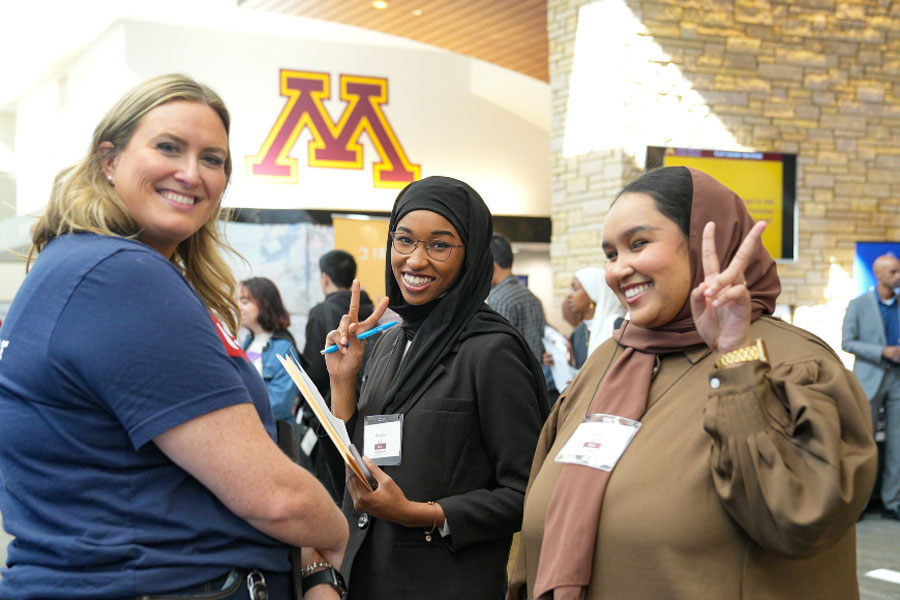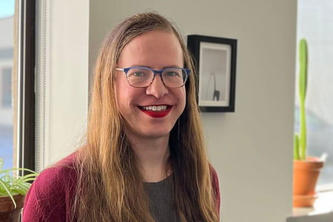
The University of Minnesota College of Liberal Arts (CLA) is teaming up with the GREATER MSP Partnership on an audacious goal: to make the Twin Cities a national hotspot for college internships.
GREATER MSP, a resource for businesses looking to expand or relocate to the Twin Cities region, recently launched an internship hub to encourage employers to create more and higher quality internship opportunities in the Twin Cities area. The hub includes a free internship toolkit for employers developed by CLA that includes best practices for starting or expanding an undergraduate internship program.
Across Minnesota, over 200,000 students are enrolled in undergraduate institutions, which far exceeds the number of internship opportunities.
“There are not enough internships regionally for college students in Minnesota to have one internship each during their college education, let alone multiple,” says Judy Anderson, CLA director of career readiness. “Our internship toolkit provides all the pieces that an employer, large or small, would need to start offering one internship or a whole program.”
The benefits of college internships are well-documented. Students who complete a paid internship make an average of $3,096 or more one year after graduation than those who do not. And, according to the National Association of Colleges and Employers (NACE), “internships provided the best return on investment as a recruiting strategy [for employers], compared to career fairs, on-campus visits, on-campus panels, or other activities.”
Despite the advantages of internships for both college students and employers, two-thirds of students nationally do not participate. Barriers can include high competition for paid opportunities, financial and family obligations, or a lack of information about how to identify and access opportunities. Unpaid internships, which are common even in for-profit companies, are often only an option for students who already have financial resources.
Lack of paid internship opportunities also negatively impacts employers. In the Twin Cities metro, 50,000 job openings require less than one year of professional experience; despite this, there often remains a gap between students’ experience and employer expectations for entry-level candidates. Providing paid internships that give more students hands-on experience is therefore vital.
Dayana Lopez-Martinez, a CLA alumna and Minnesota Children’s Museum talent resources generalist, says that she uses an internship program to recruit a more diverse workforce.
“We are trying to make our intern pools reflective of the communities we want to see at the museum,” Lopez-Martinez says. She has made great strides in hiring interns from diverse backgrounds through strategies like intentional recruitment in colleges like CLA, where approximately 40 percent are students of color or Indigenous students.
CLA’s internship toolkit for employers contains strategies for building diversity, equity, and inclusion in the Twin Cities job market, drawing on CLA’s expertise as the largest and most diverse undergraduate college at the University of Minnesota.
Internship spotlight
Peter Nguyen
CLA student Peter Nguyen is participating in a paid internship at Ecolab this summer focused on data quality. He will enter his fourth year in CLA as a computer science major in the fall.
“I feel super lucky,” says Nguyen. “Ecolab is a big company and everyone I’ve met is willing to help out.”
Nguyen credits his internships as helping him gain hands-on experience and better understand what he wants to do after graduation.
Ava Hupka
“When people hear I majored in sociology, they think I’m going straight to grad school,” says recent CLA graduate Ava Hupka.
Instead, Hupka is working this summer as a guest experience coordinator at Target Field. As a student, Hupka pursued three internships in companies where she could have hands-on industry experience.
“During [one] internship I learned benefits administration wasn’t for me because I enjoy tuning into my extroverted personality in the workplace and that role wasn’t fitting for that,” she says. “As I explore jobs after graduation, I know more about what kind of job I would actually like.”
PuiYii Goh
“I always knew I wanted to go into health care, but I didn’t know which field,” says CLA alumna PuiYii Goh, who graduated in 2019 with a psychology major. “My internship helped me narrow down my interests.”
As an undergraduate, Goh participated in a six-month internship with ACR Homes as a direct care professional. There, she cared for geriatric patients in a group home setting and worked with nurses, occupational therapists, social workers, and medical students.
“The internship gave me experience with interdisciplinary collaboration, which is very important in the health care industry,” says Goh. “It was a good space to experience a pre-job before going out into the real world.”
Today, Goh is in a clinical doctoral program in audiology at the University of Minnesota, where she works with hearing impaired people.
This story was adapted from the original at the College of Liberal Arts.
- Categories:
- Arts and Humanities
- Education





